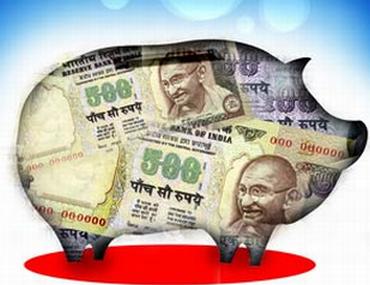
Here's why value cost averaging scores over rupee cost averaging.
Mutual fund AMCs from time to time come up with innovative offerings to compete with each other. HDFC AMC recently came up with one such offering -- HDFC Swing STP. We share details of HDFC Swing STP and how it differs from other current offerings.
HDFC Mutual Fund started a new concept of Swing STP through which investors can switch a fixed amount from debt fund to equity scheme (growth option) in order to achieve a fixed target value of investment. Investors will have to invest a lump sum of minimum Rs 12,000 in any of the debt funds. This facility is available in 23 HDFC funds.
HDFC Swing STP works on the principle of value cost averaging whereas HDFC STP (without 'Swing') works on the concept of rupee cost averaging.
Rupee cost averaging works on the principle of investing a fixed sum of money at regular intervals irrespective of the market levels.
On the other hand under value cost averaging varying amounts are invested at regular intervals depending on the market fluctuations to arrive at a specific target portfolio value at each transfer date.
Courtesy: Investment-mantra.in

What is Swing STP?
Swing STP is a facility wherein unitholder(s) can opt to transfer an amount at regular intervals from designated open-ended Scheme(s) of HDFC Mutual Fund ('Transferor Scheme') to the Growth Option of designated open-ended scheme(s) of HDFC Mutual Fund ('Transferee Scheme).
HDFC Swing STP offers transfer facility at weekly, monthly and quarterly frequency. A unitholder is free to choose the frequency of such transfers. In case the frequency (Weekly/ Monthly/ Quarterly) is not indicated, monthly frequency is treated as the default frequency.
The minimum amount per Swing STP installment shall be as follows:
Swing STP: Weekly & monthly interval: Rs 1,000 and any amount thereafter
Swing STP: Quarterly interval: Rs 3,000 and any amount thereafter.
Under HDFC Swing STP, the amount invested will be more when the market levels are lower and lower when the market levels are higher.

How the Swing STP concept works?
Let's take an example to understand the concept of Swing STP.
For instance, an investor wants to invest a sum of Rs 12,000 in HDFC Growth Fund. Firstly, s/he has to invest Rs 12,000 in any of the debt funds, say HDFC Liquid Fund, at one go.
On January 1, 2012 (first installment), Rs 1,000 will be switched into HDFC Growth Fund at an NAV of Rs 10. Suppose the NAV of the scheme shoots up to Rs 12 on February 1, thus the market value of his investment will go up to Rs 1,200, and only Rs 800 will be switched into HDFC Growth Fund on February 1.
One unique aspect of this facility is if an investor's market value of investments in March goes up to Rs 3,500 prior to the transfer, Rs 500 will be transferred back (reverse transfer) to HDFC Liquid Fund instead of switching Rs 500 into HDFC Growth Fund.
If an investor's market value decreases to Rs 2,500 in March, then Rs 1,500 will be transferred from HDFC Liquid Fund to achieve the target value of Rs 4,000 in April.
The total amount invested by an investor through Swing STP could be more than the total target market value if the NAV falls. One flipside of value cost averaging is that if investor's target market value of investment falls to Rs 8,667 in the month of November at NAV of 13 (11th installment), then investor will have to pump in Rs 2,333 to achieve the target value of Rs 11,000. Thus deciding the amount of investment and investor's ability to pump in money becomes crucial.

Benefits of HDFC Swing STP
HDFC Swing STP has the following benefits:
Conclusion
Since Swing STP is based on the concept of the value cost averaging; the scheme invests more when the NAVs are low and less when the NAVs are high or draw the excess when the portfolio value is more than the targetted investment value. Here there's no need to time your entry or exit, the scheme takes care of it as it buys more when NAVs are less and less when NAVs are more.
In comparison to rupee cost averaging (RCA) returns, returns in value cost averaging (VCA) are higher.